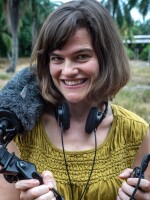This year's Nobel Prize for chemistry is shared by three international scientists, who moved chemistry out of the lab and into the world of computing.
Together they developed tools for studying complex molecules — such as enzymes in the human body and plants' photosynthesis machinery — inside cyberspace.
These computerized tools allow scientists to design drugs more quickly and cheaply by doing their experiments with computer programs instead of inside rats and monkeys.
All three scientists — Martin Karplus of the University of Strasbourg and Harvard University, Michael Levitt of Stanford University, and Arieh Warshel of the University of Southern California — were born overseas. But they met up at Harvard in the early 1970s to start their work.
They were all focused on the same task: watching molecules perform their chemical dances with the help of a computer.
The secret to their success was marrying two branches of physics that typically oppose each other. "Quantum mechanics and Newtonian physics don't usually agree or work together," Sven Lidin of the Nobel Prize committee said. "The laureates made them friends."
Chemical reactions happen at lightning speeds, so it's very difficult to study the details in the lab in real time.
But if you can write computer programs that simulate the reactions, you can slow them down and figure out exactly how they work. Then you can start to optimize them. For instance, you can make more efficient solar cells, better drugs to fight cancer or cheaper catalytic converters that break down air pollutants.
That's exactly what Karplus was trying to do back in 1972, as a young professor at Harvard University. He turned to quantum physics for help with the task. But he was soon stuck because quantum mechanical calculations require massive computing power — even more than is easily available today. Back then, the situation was even more daunting. Many computers were still programmed with punch cards.
Then Warshel came to Karplus' lab as a postdoctoral fellow. He had just finished his doctorate at Weizmann Institute in Israel, where he and Levitt had been developing models like the ones Karplus was working on. But instead of using quantum mechanics, Warshel and Levitt made use of classical mechanics.
Pioneered by Isaac Newton in the 17th century, classical mechanics requires much less computing power than quantum mechanics, but it isn't always as accurate. That's where quantum mechanics shines.
Then Karplus and Warshel had an insight: Why not combine the two branches of physics — use quantum mechanics to simulate parts of a molecule that need high accuracy, but then classical mechanics for everything else?
The strategy allowed Karplus and Warshel to make some of the first models of small molecules in the computer, including one of vitamin A.
But their approach was still quite limited. It couldn't tackle problems like drug design and photosynthesis because these reactions involve giant molecules, called enzymes.
That's where Levitt's research came in to help. After two years at Harvard, Warshel reunited with Levitt in Israel and later Cambridge University. By 1976, the two had cracked how to model molecules of almost any size in the computer.
This advance opened the door for scientists all over the world to study a vast array of chemical reactions, such as how enzymes in our body break down toxins, convert sugar into energy and interact with drugs.
"What we've done ... is to develop methods that allow us to see how proteins actually work," Warshel said Wednesday. "It's like seeing a watch and wondering how it actually works. If you have an enzyme that digests food, you want to understand how it's happening ... to design drugs, or, in my case, satisfy my curiosity."
Copyright 2021 NPR. To see more, visit https://www.npr.org.



